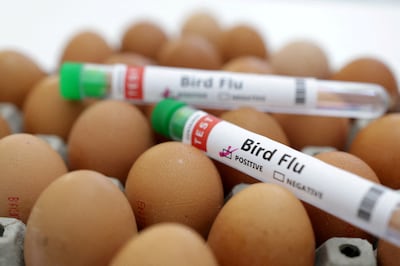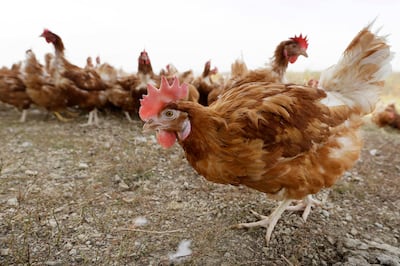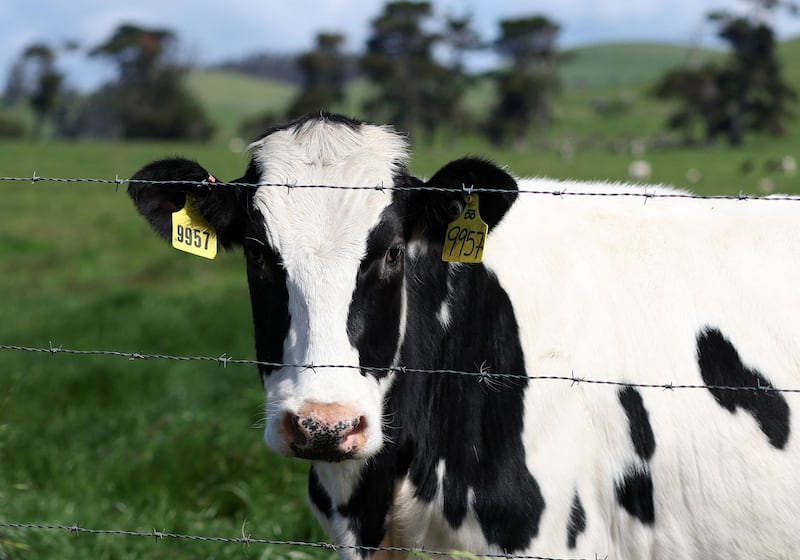Dairy herds in eight US states have been infected with H5N1, a type of influenza that can cause bird flu, with viral material detected in one fifth of milk samples.
While the virus is not easily caught by human beings, it has proved fatal in more than half of all human infections, so the recent findings have led to concern.
But should people be worried about catching the virus from tainted produce?
Outbreak in the US dairy industry
Herds of cattle in eight states have been infected with H5N1, with the animals possibly being exposed to the virus through infected milking equipment, by people moving between farms or by the transport of cattle.
Infected cattle often lose their appetite and suffer from mastitis, an inflammation of the udder, with up to one fifth of animals in herds becoming ill.
According to Prof Paul Digard, professor of virology at the University of Edinburgh in the UK, spread of H5N1 within the US dairy sector seems, until recently, to have largely gone unreported.
“It’s been happening without people identifying [it],” he said. " … Quite a few herds have been affected and there’s a wide geographical range, multiple sites … I’ve been told there’s probably cow-to-cow transmission.”

H5N1 is a subtype of Influenza A which, until now, has not infected cows, making recent events “something new and different, which is worrying”, according to Prof Digard.
“There’s no doubt the virus will be adapting to work better in cows, [which are] another mammal. In some respects, it’s going to make it better adapted to humans,” he added.
The US Department of Agriculture has issued requirements for the testing of some cattle if they are to be moved between states.
The milk of infected animals should be disposed of, but pasteurisation in any case inactivates virus particles and is thought to eliminate the risk of humans becoming infected from milk.
As milk sold in shops in the US should have been pasteurised, the US Food and Drug Administration has said that it is safe to drink. The organisation has, however, advised people not to drink raw milk.
What is bird flu?
Avian flu was recognised as far back as the late 19th century, but H5N1, which is strongly infective, was identified for the first time in 1996 in a goose on a farm in southern China. The following year, the first human cases emerged, in Hong Kong.
Bird flu spreads easily between farmed birds, more than half a billion of which have been slaughtered to control outbreaks.
Wild birds, too, become infected and, about four years ago, a strain appeared that was able to persist in such populations. Migratory birds have spread the disease globally.
Many wild bird populations have been devastated and the virus has killed large numbers of wild mammals too, including, for example, elephant seals, with the University of California, Davis reporting up to 96 per cent mortality among pups late last year.
“Although reported deaths among wild birds are in the tens of thousands, the actual numbers are thought to be in the millions,” Compassion in World Farming, a campaigning organisation, said in a 2023 report, Bird Flu: Only Major Reforms Can End It.
What are the threats to people?

A dairy industry employee in Texas is thought to be the only person to have been infected from the outbreaks in dairy cattle. This individual developed conjunctivitis, an eye inflammation, but did not become seriously ill.
The major concern the potential of the virus to mutate to a form that spreads easily between people, as this could result in many infections.
Until now, the US Centres for Disease Control and Prevention says that there have been no known cases of person-to-person spread of H5N1 viruses, adding that the situation “remains primarily an animal health issue”.
Prof Ian Jones, a professor virology at the University of Reading in the UK, has looked at genetic sequence data for the virus and said that this “doesn’t indicate there’s been any changes which would suggest it can transmit mammal-to-mammal”.
“Even though it’s the latest of these … viruses to get into a mammalian species, there doesn’t seem to be evidence of it adapting to that mammal. It would need to adapt if it was to get into people,” he said.
“It’s pretty clear it needs to change in several places in order to become a human transmissible virus … All the data I’ve seen doesn’t pick up the changes thought to be necessary.”
It is possible, Prof Jones said, that H5N1 is so specialised for infecting birds that it could be unable to evolve into a form that could easily infect people.
He noted that the number of cases in the birds in the UK recently has been lower than in previous years, but said this was not evidence that the virus was tailing off in bird populations.
Prof Digard said that while there was no immediate threat of a pandemic, the situation was serious enough that “people whose job it is to worry about it have to take it very seriously indeed”.
He said the UK, the US and other countries have “seed vaccines” that would be effective against bird flu, but it would take time to build up stocks if large numbers of people had to be immunised.
“You can do the forward planning and make sure as much is in place as possible in case you need to do it,” he said.
Is intensive farming a factor in the spread of bird flu?
Some researchers and campaign organisations have highlighted intensive farming as a factor that promotes the spread of disease between animals and so increases the risk of outbreaks.
Since H5N1 was identified, the global poultry population is thought to have doubled to about 30 million, which increases the risk of outbreaks.
“The sanitation is often very bad and large numbers are crowded together in high stocking densities,” said Prof Andrew Knight, a veterinary surgeon and professor of animal welfare at Griffith University in Australia.
He said that the conditions were “chronically stressful” for the animals, and this compromises their immune systems and makes it easier for pathogens to spread.
“It’s the perfect set up for the transmission of disease,” said Prof Knight, who last year, with Jenny Mace of the University of Winchester in the UK, co-wrote a study on influenza risks on mixed intensive pig and poultry farms.
He said mixed farms where animals were kept in intensive conditions were a high risk, as influenza could spread between wild birds, farmed birds and pigs, potentially leading to different forms of influenza coming into contact with one other, which could result in new pathogenic types emerging.







